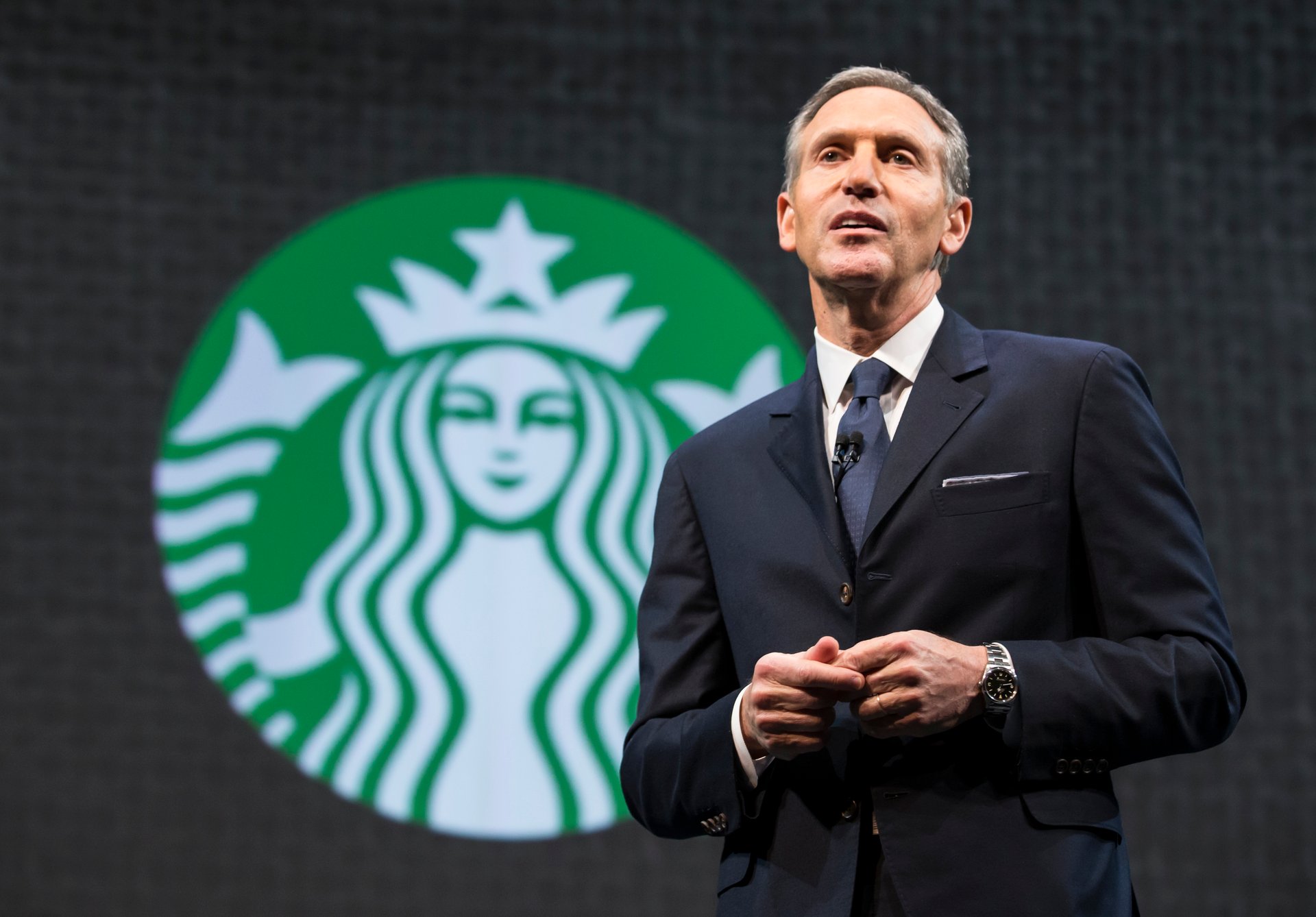Howard Schultz likes Starbucks CEO Brian Niccol's plan to be a 'third place' again
The former Starbucks CEO said in a surprise appearance that he's never been more optimistic about the future of the company than he is now

(Photo by Stephen Brashear/Getty Images)
When Starbucks’ former leader Howard Schultz first heard about the “Back to Starbucks” plan, he “did a cartwheel in [his] living room.” At least, that’s what he told CEO Brian Niccol in front of about 14,000 others at this year’s Starbucks Leadership Experience in Las Vegas.
Suggested Reading
Schultz, who remains closely associated with the company despite stepping down after another stint as CEO and leaving the board in 2023, said he’s optimistic about Starbucks’ future — despite some worrying outside signs that have included disappointing quarterly earnings, falling sales, and protests.
Related Content
“I’ve never been more optimistic about the future of the company than I have been today,” he said in a surprise appearance at the conference.
Niccol has focused on making Starbucks feel like a coffee company again.
His ambitious “Back to Starbucks” plan includes updates to make stores feel more like a “third place” (comfier furniture, a no-loitering policy), a sequencing algorithm to get drinks in customers’ hands more efficiently and quickly; a dress code update; requiring patrons’ names to be handwritten on cups; mobile order scheduling; restoring the condiment bar; and a simplified menu. Starbucks recently announced that it’s partnering with Microsoft Azure to get AI help for its baristas.
“[The “Back to Starbucks” plan is] short, it’s to the point, and it’s exactly the tip of the spear of who we should be, and who we are,” Schultz said. “And we are, above all else, a coffee company.”
Niccol took the reins in September after being lured away from his role as Chipotle’s CEO to take over the struggling coffee chain — after the board ousted Schultz’s hand-picked successor, Laxman Narasimhan. (Schultz, for his part, reacted to the news of Narasimhan’s firing by saying Niccol was exactly the leader Starbucks needed.) And investors seem to be reacting well to Niccol’s plans; the company’s stock is up almost 11% in the last month and almost 20% in the last year.
The current CEO has particularly prioritized making Starbucks that “third place” — somewhere outside of home and work where people can gather and spend time. Being a “third place” was the first thing Niccol and Schultz talked about; Schultz said that at a time of global anxiety and uncertainty, giving people a place to come where they can feel anchored by community is more important than ever.
“The third place is not something we need to reinvent — it’s who we are,” Schultz said. “People all over the world are longing for human connection. … We are a company that is steeped in humanity. We are steeped in human connection, because of all of you and the people you represent.”
While Schultz has stepped back from Starbucks, he remains a key company figure because of his role in its growth and success. So what he says carries plenty of weight on Wall Street.
He said Wednesday that Starbucks had struggled recently because “the culture was not understood. The culture wasn’t valued. The culture wasn’t being upheld."
But Schultz seems to be on board with Niccol’s plans for a company turnaround.
“Our success is not an entitlement – it must be earned,” Schultz told conference attendees. “Be true to the coffee. Be true to your partners. Let’s surprise the world again.”